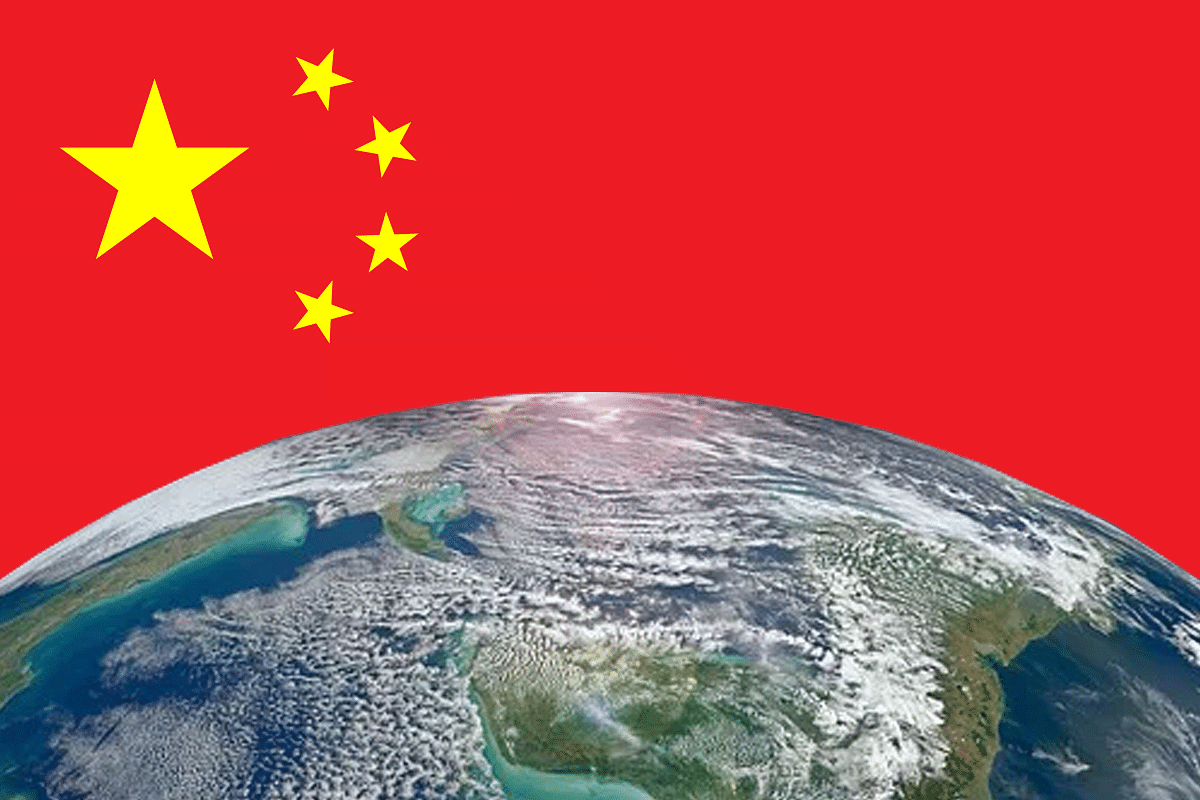Economy
Retail Sales On The Rise In China, But Economic Recovery Remains Uncertain

Chinese flag over earth (Representative image)
China's consumer spending saw growth in the first two months of 2023, indicating an economic recovery. However, the government warns that the recovery is still fragile due to pandemic restrictions.
Retail sales increased by 3.5 per cent YoY in January-February 2023 following three months of decline. Encouraging trends were also observed in the property sector despite the ongoing debt crisis.
The recently released data on Chinese economic activity, which follows the lifting of pandemic-related restrictions, showed a mixed outlook with the global economic situation impacting demand for exports and a slowdown in the property sector hampering recovery.
China's National Bureau of Statistics issued a statement cautioning that the economic recovery's base was insufficient and pledged to implement initiatives to stimulate internal consumption.
Chinese policymakers have set an economic growth target of 5 per cent for 2023, which analysts speculate may have been a tactic to prevent unmet expectations after the country's economy only grew 3 per cent in 2022.
Chinese premier Li Qiang cautioned on Monday (14 March) that meeting the set target post-pandemic would not be an effortless feat, despite the country's recovery from the economic downturn.
Amid China's zero-Covid lockdown and mass-testing system, retail sales data met expectations and was closely monitored. In 2020 and 2021, retail sales fell, marking the first annual declines since the late 1960s.
According to Louise Loo, the lead China economist at Oxford Economics, the recovery is showing signs of being led by consumers. Although the momentum has increased, it is still relatively feeble.
"It's not the desired booming reopening boost that was expected," she stated, despite the fact that the recovery has begun in full swing.
China has gradually reopened since December amid nationwide outbreaks. The government lifted the inbound quarantine rules in January and recently allowed foreign tourists to enter the country again.
In the first two months of the year, China's fixed-asset investment outperformed expectations by rising 5.5 per cent YoY, while industrial output increased 2.4 per cent YoY, even though urban unemployment remained slightly high at 5.6 per cent.
China's post-pandemic recovery is weak compared to other countries, says Ting Lu, Nomura's chief China economist.
Despite the liquidity crisis in the property sector since late 2021 and a wave of developer defaults, metrics have generally improved compared to the end of 2022.
According to the National Bureau of Statistics, property investment in January and February decreased by 5.7 per cent, which is less than the 12.2 per cent decline in December.
Meanwhile, property sales showed a 3.6 per cent year-on-year fall, a significant improvement from a 31.5 per cent decline in December, and new construction starts by floor area decreased by 9.4 per cent, which was also a notable recovery from a 44.3 per cent drop in December.
Manufacturing and infrastructure rose by 8.1 and 9 per cent respectively.
Although retail sales data looked promising, car sales experienced a significant decline of 9.4 per cent YoY in January and February, in contrast to 4.6 per cent growth in December, indicating an uneven recovery, according to Lu.
China consolidates economic data for January and February, taking into account the lunar new year holiday disruptions.
Lu predicted that although ongoing weaknesses would hinder the recovery, retail sales figures in March would improve due to the disturbance caused by China's exit wave of Covid infections in January.
Support Swarajya's 50 Ground Reports Project & Sponsor A Story
Every general election Swarajya does a 50 ground reports project.
Aimed only at serious readers and those who appreciate the nuances of political undercurrents, the project provides a sense of India's electoral landscape. As you know, these reports are produced after considerable investment of travel, time and effort on the ground.
This time too we've kicked off the project in style and have covered over 30 constituencies already. If you're someone who appreciates such work and have enjoyed our coverage please consider sponsoring a ground report for just Rs 2999 to Rs 19,999 - it goes a long way in helping us produce more quality reportage.
You can also back this project by becoming a subscriber for as little as Rs 999 - so do click on this links and choose a plan that suits you and back us.
Click below to contribute.
Latest